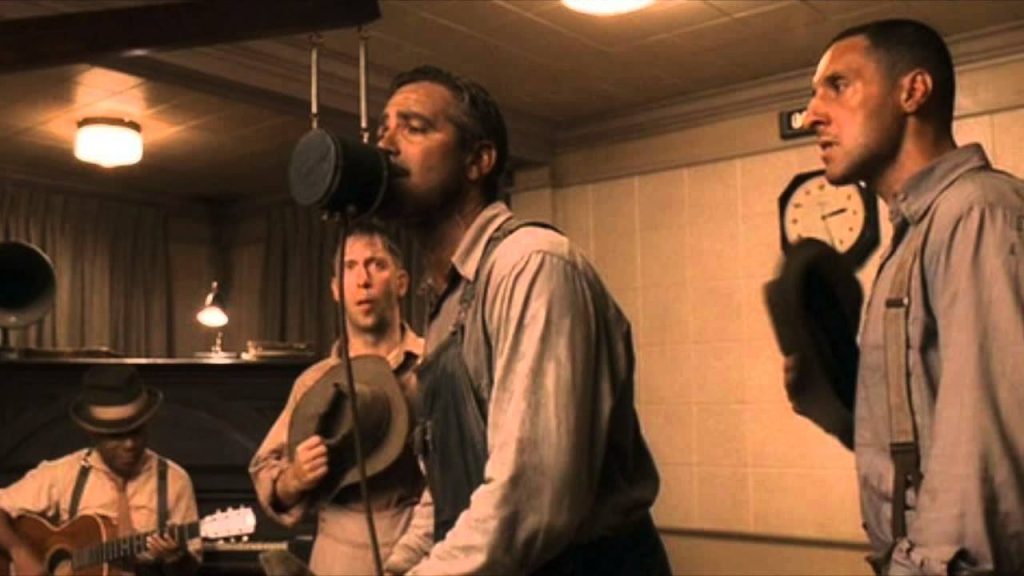
A Melancholic Journey Through Time: The Enduring Tale of “I Am a Man of Constant Sorrow”
When you hear “I Am a Man of Constant Sorrow” by The Soggy Bottom Boys, you are instantly transported to a world where the echoes of the past resonate with every note. This hauntingly beautiful song, which rose to prominence with its inclusion in the 2000 film O Brother, Where Art Thou?, encapsulates the essence of a timeless struggle—a journey of hardship and resilience that speaks to the soul.
Originally an American folk song dating back to the early 20th century, “I Am a Man of Constant Sorrow” has been covered by numerous artists over the years. However, it was the rendition by The Soggy Bottom Boys—a fictional band from the film—that truly captured public imagination and breathed new life into this classic. The song reached an impressive level of recognition, finding its way into the hearts of many and peaking at number 35 on the Billboard Hot Country Singles & Tracks chart in 2002.
The film O Brother, Where Art Thou?, directed by Joel and Ethan Coen, serves as a modern retelling of Homer’s Odyssey set in the Depression-era South. It is within this context that “I Am a Man of Constant Sorrow” becomes more than just a song; it transforms into a narrative device that underscores the themes of struggle, identity, and redemption. The character Ulysses Everett McGill, portrayed by George Clooney, lip-syncs to the voice of Dan Tyminski, bringing an authenticity and earnestness that resonates with audiences both young and old.
What makes this song particularly compelling is its deep-rooted emotional resonance. It speaks directly to those who have known hardship and sorrow, painting a vivid picture of life’s trials through its poignant lyrics. The song’s protagonist narrates his life’s journey—a path marked by relentless adversity and sorrow. Yet, despite its somber tone, there is an underlying strength that emerges from his acceptance of his fate. This duality—of acknowledging suffering while maintaining resilience—is what gives “I Am a Man of Constant Sorrow” its lasting power.
The musical arrangement itself is simple yet profoundly effective. With its roots in traditional bluegrass, the song features instruments like the banjo, fiddle, and guitar. These elements come together to create a soundscape that is both nostalgic and evocative. For many listeners, particularly older generations, these sounds evoke memories of a bygone era—a time when music was not just entertainment but a reflection of everyday life.
As you listen to “I Am a Man of Constant Sorrow,” it’s easy to find yourself lost in contemplation. Its lyrics serve as a mirror reflecting our own experiences with loss and perseverance. Lines like “I’ve seen trouble all my days” speak to universal truths about human existence—the inevitability of suffering and the enduring hope for better days.
The song’s enduring popularity can also be attributed to its cultural significance. It taps into the rich tapestry of American folk music tradition—a genre that has always been about storytelling and capturing the human experience in its rawest form. For those who grew up listening to folk and bluegrass music, “I Am a Man of Constant Sorrow” is more than just a song; it is a piece of history that connects generations.
In conclusion, “I Am a Man of Constant Sorrow” by The Soggy Bottom Boys is much more than an anthem for those who have faced life’s hardships; it is a testament to the enduring human spirit. Its haunting melody and poignant lyrics continue to resonate with listeners across all walks of life, serving as a reminder that while sorrow may be constant, so too is our capacity for resilience. As you delve into this musical masterpiece, allow yourself to be swept away by its timeless tale—a story as old as time itself yet as relevant today as ever.